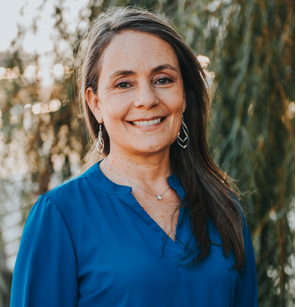Priscila Chaverri Echandi
Académico de NúmeroBSc en Ingeniería Forestal, Instituto Tecnológico de Costa Rica. 1987-1993
PhD en Patología Forestal, The Pennsylvania State University, Estados Unidos. 1998-2003
- Profesora Asociada, Escuela de Biología, Universidad de Costa Rica. 2013-presente
- Investigadora visitante (ORISE Fellow), Mycology and Nematology Genetic Diversity and Biology Laboratory, Agricultural Research Service, U.S. Department of Agriculture, Estados Unidos. 2020-presente
- Profesora en Department of Plant Sciences and Landscape Architecture, University of Maryland, Estados Unidos. 2008-2018
- Profesora en Department of Biology, Howard University, Estados Unidos. 2005-2008
- Postdoctorado, Plant Pathology and Plant-Microbe Biology Section, Cornell University, Estados Unidos. 2003-2005
Otras afiliaciones:
Centro de Investigaciones en Productos Naturales (CIPRONA), Universidad de Costa Rica
Profesora adjunta, Department of Civil and Environmental Engineering, University of Maryland
La Dra. Priscila Chaverri se especializa en sistemática, taxonomía, evolución y filogenética de hongos ascomicetos. El enfoque más reciente de sus investigaciones ha sido el uso de la sistemática, filogenética/filogenómica, genómica y metabolómica para predecir las funciones ecológicas y la actividad biológica de los hongos que se encuentran en los fitobiomas naturales, con énfasis en control biológico y agricultura sostenible. Ella tiene aproximadamente 100 publicaciones, incluyendo varias monografías y libros. Ha obtenido más de 9 millones de dólares en financiamientos (incluyendo colaboraciones) en Estados Unidos y Costa Rica. Además, ha recibido varios premios, incluyendo Científica Destacada 2016 (ANC y MICITT); premio C. J. Alexopolous 2013, el cuál es otorgado por la Sociedad Micológica de América a un(a) micólogo(a) joven; y “Face of the Future in Mycology” (Cara del Futuro en Micología) (2008) de la Sociedad Americana de Fitopatología. Ha descrito más de 100 especies nuevas para la ciencia, la mayoría de regiones tropicales. En 2015, W. Jaklitsch & H. Voglmayr le dedicaron una especie nueva de hongo, Trichoderma priscilae, por sus contribuciones a la sistemática de Trichoderma.”
Publicaciones importantes o destacadas (para una lista completa, ir a www.chaverrifungi.com)
Chaverri, P., Chaverri, G. 2022. Fungal communities in feces of the frugivorous bat Ectophylla alba and its highly specialized Ficus colubrinae diet. Animal Microbiome 4: 24
Escudero-Leyva, E., Alfaro-Vargas, P., Muñoz-Arrieta, R., Charpentier-Alfaro, C., Granados-Montero, M., Alvarado-Picado, E., Rodríguez-Rodríguez, C., Chaverri, P., Mora-Villalobos, A. 2022. Tolerance and biological removal of fungicides by Trichoderma species isolated from the endosphere of wild Rubiaceae plants. Frontiers in Agronomy 3: 772170 (P. Chaverri: corresponding author)
Barrera, V., Iannone, L., Romero, A. I., Chaverri, P. 2021. Expanding the Trichoderma harzianum species complex: Two new species from Argentinian natural and cultivated ecosystems. Mycologia 113: 1136-1155.
Seas, C., Chaverri, P. 2020. Response to experimental temperature increase by psychrophilic plant endosymbionts. Royal Society Open Science 7: 201405.
Pujade-Renaud, V., M. Déon, R. Gazis, S. Ribeiro, S. Labernia, F. Granet, F. Dessailly, P. Chaverri. 2019. Endophytes from wild rubber trees as antagonists of the pathogen Corynespora cassiicola. Phytopathology 109:1888-1899.
Skaltsas, D., Badotti, F., Vaz, A.B.M., Gazis, R., Wurdack, K., Castlebury, L.A., GóesNeto, A., Chaverri, P. 2019. Exploration of stem endophytic communities revealed developmental stage as one of the drivers of fungal endophytic community assemblages in two Amazonian hardwood genera. Scientific Reports 9: 12685.
Salgado-Salazar, C., Rossman, A.Y., Chaverri, P. 2016. The genus Thelonectria (Nectriaceae, Hypocreales, Ascomycota) and closely related species with cylindrocarpon-like asexual states. Fungal Diversity 80: 411–455. (Monografía)
Gazis, R., Chaverri, P. 2015. Wild trees in the Amazon basin harbor a great diversity of beneficial endosymbiotic fungi: Is this evidence of protective mutualism? Fungal Ecology 17: 18-29.
Chaverri, P., Branco-Rocha, F., Jaklitsch, W., Degenkolb, T., Gazis, R., Samuels, G.J. 2015. Systematics of the Trichoderma harzianum species complex and the reidentification of commercial biocontrol strains. Mycologia 107:558-590.
Chaverri, P., Samuels, G.J. 2013. Evolution of habitat preference and nutrition mode in a cosmopolitan fungal genus with evidence of interkingdom host jumps and major shifts in ecology. Evolution 67: 2823-2837.
Schoch, C.L., Seifert, K.A., Huhndorf, S., Robert, V., Spouge, J.L., Levesque, A.,Chen, W., and Fungal Barcoding Consortium*. 2012. Nuclear ribosomal internal transcribed spacer (ITS) region as a universal DNA barcode marker for Fungi. Proc. Nat. Acad. Sci. 109: 6241-6246. *P. Chaverri es parte del Fungal Barcoding Consortium.
Hirooka, Y., Rossman, A.Y., Samuels, G.J., Lechat, C., Chaverri, P. 2012. A monograph of Allantonectria, Nectria, and Pleonectria (Nectriaceae, Hypocreales, Ascomycota) and their pycnidial, sporodochial, and synnematous anamorphs. Studies in Mycology 71: 1210. (Monografía)
Chaverri, P., Huhndorf, S., Rogers, J., Samuels, G.J. 2010. Microhongos Comunes de Costa Rica y otras regiones tropicales (Ascomycota, Pezizomycotina, Sordariomycetes). Common Microfungi of Costa Rica and other tropical regions (Ascomycota, Pezizomycotina, Sordariomycetes). INBio Editorial: Heredia. 241 pp. + 60 lam. pp. (Libro)
Chaverri, P., Liu, M., Hodge, K.T. 2008. Neotropical Hypocrella (anamorph Aschersonia), Moelleriella, and Samuelsia. Studies in Mycology 60: 1-68. (Monografía)
Chaverri, P., Samuels, G.J. 2003. Hypocrea/Trichoderma (Ascomycota, Hypocreales, Hypocreaceae): Species with green ascospores. Studies in Mycology 48: 1-116. (Monografía)











